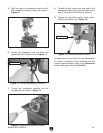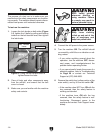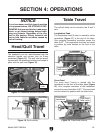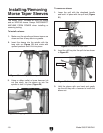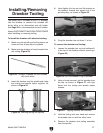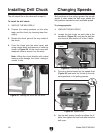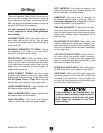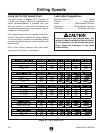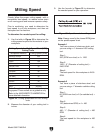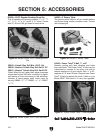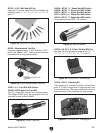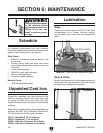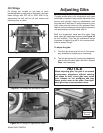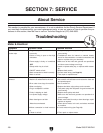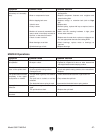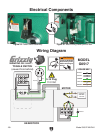
Model G0517 Mill/Drill
-21-
Milling Speed
Closely follow the proper cutting speed—with a
reasonable feed speed—to reduce undue strain
on all moving parts and increase operator safety.
Prior to machining, you need to determine the
best speed to cut your workpiece, and then set
that speed on the machine.
To determine the needed speed for milling:
1. Use the table in Figure 32 to determine the
cutting speed required for the material of your
workpiece.
Cutting Speeds for High Speed Steel (HSS)
Cutting Tools
Workpiece Material Cutting Speed (SFM)
Aluminum & alloys 300
Brass & Bronze 150
Copper 100
Cast Iron, soft 80
Cast Iron, hard 50
Mild Steel 90
Cast Steel 80
Alloy Steel, hard 40
Tool Steel 50
Stainless Steel 60
Titanium 50
Plastics 300-800
Wood 300-500
Note:
For carbide cutting tools, double the cut-
ting speed. These values are a guideline only.
Refer to the MACHINERY'S HANDBOOK for
more detailed information.
Figure 32. Cutting speed table for HSS cutting
tools.
3. Use the formula in Figure 33 to determine
the needed speed for your operation:
Figure 33. Speed formula for milling.
Note: Always round to the closest RPM given
on the spindle speed chart.
Example 1
You have a
piece of aluminum stock, and
you are using a
1
⁄2" diameter HSS cutting
tool.
Step 1:
300 (SFM from chart) x 4 = 1200
Step 2:
1200 / .5" (Diameter of cutting tool) =
2400 RPM
Result:
The best speed for this workpiece is 2400
RPM.
Example 2
You have a piece of stainless steel, and
you are using a 1" diameter carbide cutting
tool.
Step 1:
60 (SFM from chart) x 2 (for carbide tool) =
120
Step 2:
120 (determined SFM) x 4 = 480
Step 3:
480 / 1" (Diameter of cutting tool) = 480
RPM
Result:
The best speed for this workpiece is 480
RPM.
2. Measure the diameter of your cutting tool in
inches.



